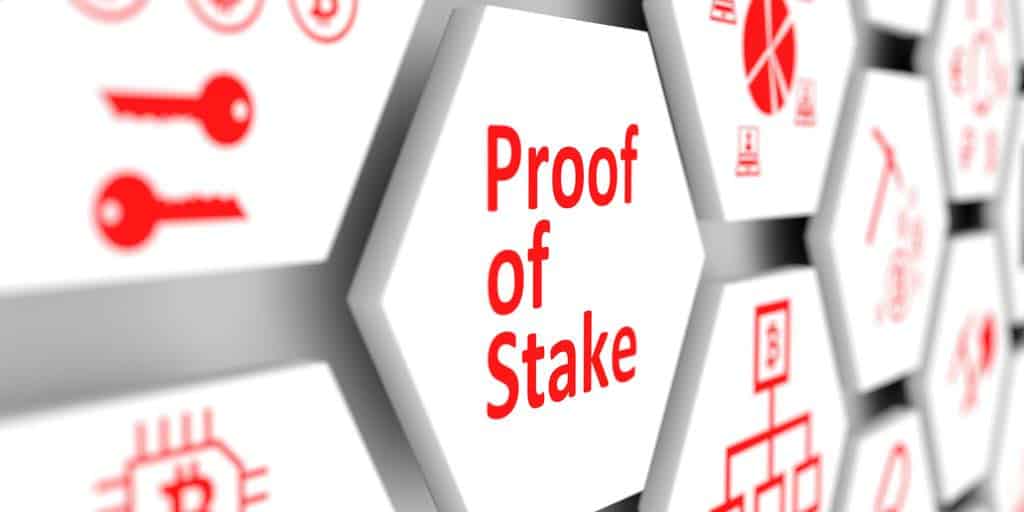
Proof of Stake or simply known as PoS, was the primary type of blockchain consensus mechanism and still considered to be the famous choice when it comes to reaching the distributed consensus. (The capability of trusting a person you do not know without considering using a third –party).
Proof of Stake is being utilized by Ethereum, Bitcoin, and various other types of cryptocurrencies. In spite of its power, similar to the various types of cryptocurrencies, Power of Work also comes up with its drawbacks, such as the threat of centralization-by-mining-pool, higher energy costs, and higher computation requirements.
When you already learned the Proof of Stake as well as its disadvantages, the need for having a system, Proof of Stake of also known as PoS, in particular, will become clearer.
But first, let us define what is stake.
According to the dictionary, the term “stake” refers to the (1) sum of money or something else of value gambled on the outcome of a risky game or venture and (2) a share or interest in a business, situation, or system.
When it comes to the cryptocurrency words, the term “stake” refers to the cryptocurrency that a person pledges and owns to participate in the validation.
How Does the Proof of Stake Works?
A single sentence of description usually considered a good starting point when you are trying to give your own explanation in regard to the complex topics. So, in other words, Proof of Stake algorithms reach consensus through obliging its users to have some amount of their tokens as a stake to have the high possibility to be chosen to be given with rewards and validate blocks of transactions for doing so.
Proof of Stake has lots of similarities with Proof of Work, but in some ways, these two also have their uniqueness. Various blockchain-based consensus algorithms have a similar goal, which is to reach the distributed consensus – to make a more protective system wherein the users are being incentivized to validate the transactions of other people at the same time keeping their whole integrity.
The concept of Proof of Stake was suggested first way back in 2011 in a small forum post. After a year, Peercoin was the primary digital currency that makes use of the said algorithm.
In terms of Power of Stake, the miners of the latest block, in some cases, it is called the “forger” is being picked in a two-part and semi-random process. The primary factor that is in need to be considered in this process is the stake of the user. How much is the currency that the user is staking?
Each of the validators must have their own stake. Staking includes depositing some tokens in the system, lock it, and the only thing that you can do is to think that is it safe, and make use of it as a collateral for you to guarantee for the block.
The more that the user will give stake, the higher the chance that they will be picked because they have lots of skin inside the game – when they act maliciously, they will be set back with a higher amount compared to the others who only give lesser stake.
Most of the consensus algorithms of Power of Stake, the incentive that will be included in the block validation is the payout through the transaction fee forms, which is different to the latest currency made by the Power of Work systems.
As we have mentioned a while ago, in the Proof of Stake based systems, the forgers or the miners will not get any block rewards. Thus, they usually take the fees for the every transaction.
At this time, you might think that Proof of Stake is too ripe for the wealthy forgers to abuse. The only answer in this issue is the use of the degree of chance to the process of selection to prevent the event where the wealthy user will always be picked to validate the transactions, get the rewards, and be richer and richer.
Another element that was added semi-random process of selection is the “random selection process.” But the way that you can use this will always depend upon the blockchain. Coin Age Selection and Randomised Block Selection are the two most popular methods that are being used.
Using Proof of Stake has lots of advantages, such as the decentralization, security, and energy efficiency. It cannot be denied that it has also its drawbacks. But these drawbacks will not affect your game. Thus, you can ensure that you can still get what you want.
Conclusion
It is vital for you to always remember that various cryptocurrencies also make use of different mechanisms. Another thing to take note is that different consensus mechanisms are also different from each other. Not all have the same work and not all will give you the same benefit.